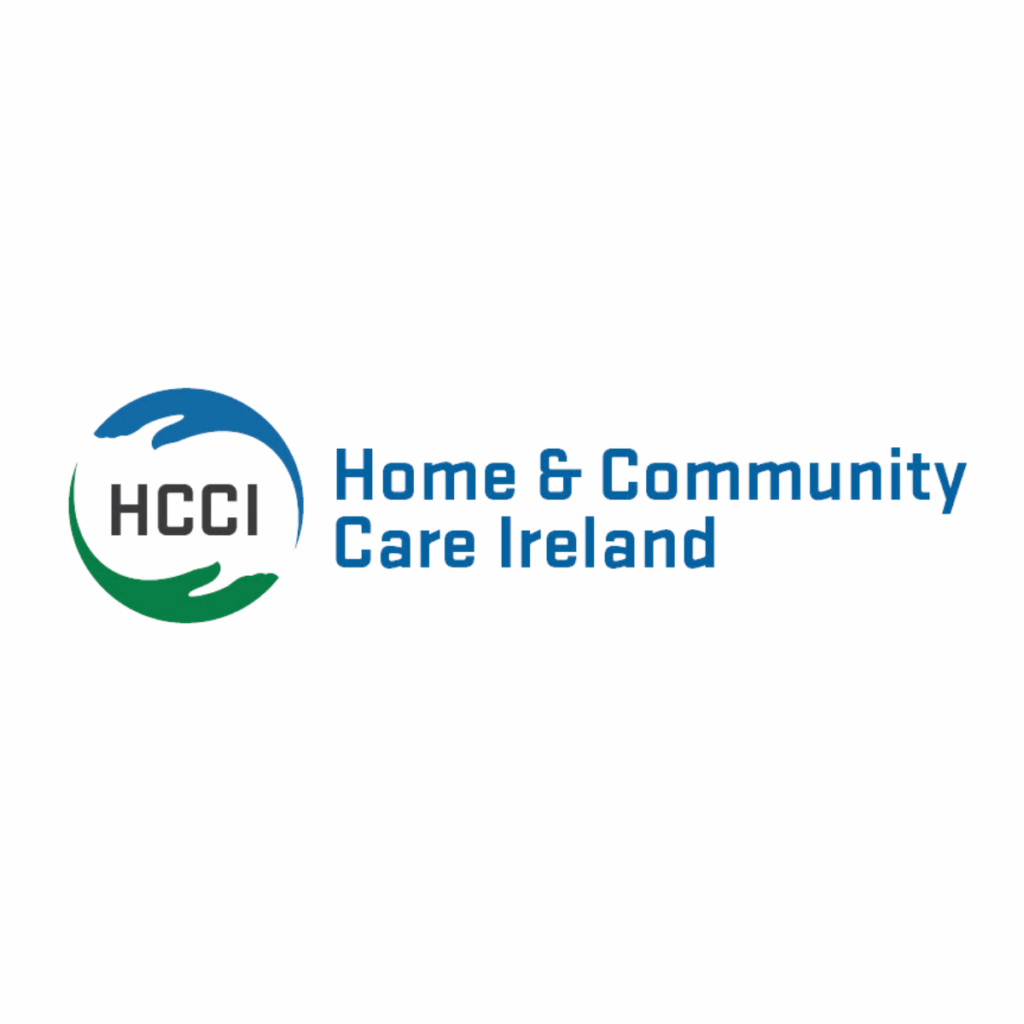Introduction
In recent years, home care or home support, has been accepted as the preferred model of care for older people in Ireland. The sector is in the process of significant reforms including the development of a Statutory Home Support Scheme. This scheme will grant people an entitlement to home support, and the establishment of the Cross Departmental Strategic Workforce Advisory Group. This scheme aims to address recruitment and retention issues within the sector. Despite an increase in demand. Media coverage and attention by policymakers over recent years, home support in Ireland remains an under-researched area and the waiting list continues to rise.
The public will be aware of recruitment issues that make it difficult for people to find a home care worker (HCW) which has led to significant waiting lists for home support. A Community Health Organisations (CHO) has significant autonomy in commissioning and delivering home support. Yet there has been little attention paid to differences across CHOs and Local Health Offices (LHO) regarding how home support is delivered (either directly by the HSE or indirectly by private providers or non-profit providers), the length of waiting lists and whether providers (be it the HSE or private/non-profits) are meeting targets (i.e. agreed hours of care to be delivered).
Information and Data
This paper primarily uses information gathered from answers to Parliamentary Questions (PQs). These PQs compare and contrast data about waiting lists, home support hours targets and regional variations about home care that is delivered either directly by the HSE or indirectly by private and non-profit providers. It seeks to examine whether CHOs where home support is delivered indirectly perform better on waiting lists and home support metrics, and to identify trends, where the data allows. It should be noted that data availability is not comprehensive. The HSE do not regularly release data on home support, rather the information is released when asked by TDs through PQs. This means there are areas where no data is available, making comparison and full analysis of trends difficult.
Primary Focus
This paper focuses on home care delivered through the HSE Home Support Service for Older People. In 2021, 55,043 people or 8.8% of over 65s received home care through the HSE Home Support Services. This equates to 20,463,216 hours of home support (HSE 2022). HSE Home Support is currently free at the point of use. Although this will likely change in the coming years (Keane et al 2022). On average, clients receive 7.1 hours of home support a week. The budget for home support in 2022 is €666.5 million. This is a significant increase from 2015 when the budget was €306 million. Reflecting the growing demand and acceptance by policymakers that home support is the preferable model of care.

Based on data from the 2016 census, 1.16% of the total population or 8.7% of over 65s receives HSE Home Support. Demand for home support is set to increase significantly in the coming decades. The ESRI (2021) project that demand for home support could increase to 42 million hours a year (more than double the current figure) when the Statutory Home Support Scheme is implemented. In addition to this, demographic changes mean the coming decades will see a 59% increase in the number of people aged 65 and older.
Home Support Literature
Increases in funding and demand, along with reforms that will further professionalise the sector, mean that more research on home support is necessary. This paper will add to the literature on home support and allow comparison between different CHOs. This will support an examination into the policy measures that are most effective in delivering timely home support and influence future older persons care strategy.
This paper first examines the delivery of home support to establish the breakdown of direct and indirectly delivered care across CHOs. It looks at the extent of waiting lists for home support and analyses trends since 2018. It then examines the difference between the actual delivery of home support and how each CHO meets its annual targets before concluding with a discussion on which CHOs preform best and worst in keeping waiting lists low and meeting their home support hours targets.
Who Delivers Home Support?
HSE Home Support is delivered by HSE employed Healthcare Support Assistants (HCSAs), private for profit and non-profit providers. The latest available data from August 2021 shows that the HSE directly delivered 36.81% of Home Support, with private for profit and non-profits delivering the remaining 63.19%. There is no data available on the breakdown of indirect care between for profit providers and non-profit voluntary organisations. In 2020, the last year in which full data is available, the HSE directly delivered 7,302,442 (41.6%) of HSE Home Support hours via their own staff. With the remaining 10,252,438 (58.4%) delivered indirectly via private and non-profit providers (HSE 2021b). This 2020 data shows a slight increase in the percentage of home support delivered indirectly compared to 2019 (55.99%) and 2018 (56.18%) (HSE 2021b).
Regional Variations
There are significant regional variations in which bodies delivers care. Data from table 2 shows that private and non-profit providers deliver a high percentage of home support in urban areas. In Dublin, all of North Dublin and 98% of South Dublin’s home support is delivered indirectly. Dublin commuter towns and areas like Galway and Clare all have a high percentage of indirectly delivered care. The HSE tend to directly deliver home support in more rural areas, with Cork and Kerry having the highest percentage, followed by counties in the Midlands and South East.
2018 – 2021
Looking at the split between HSE and private home support delivery since 2018, there has been a relatively small increase in the percentage delivered privately. The change, from 56% to 63% is not huge, but it is worth exploring why this may have happened.
Since 2018, funding for Home Support has increased from €416 million to €666 million in 2021. This reflects the Government’s Home First policy, which prioritises home support as the preferred method of care for people. In 2018, the HSE aimed to provide 17 million home support hours to 50,000 clients. In 2021, 55,000 clients received more than 20 million hours of home support. Meanwhile, the number of HCSAs employed by the HSE has decreased from 6,134 in 2018 to 5,211 in 2021 (see Table 4). Therefore, the increase in indirect home support provision likely reflects the ability of private and non-profit providers to deliver additional capacity and support the Home Support Service.
Thoughts
Although private home care providers are facing recruitment difficulties themselves, they invest significant resources into recruitment and the data suggests they are more agile in their recruitment than the HSE. The private and non-profit sector typically offer more flexible hours than the HSE. Allowing HCWs to choose their hours around other commitments, which is something the public sector generally does not offer. This has perhaps broadened the recruitment pool for private sector providers.



Waiting List
At the end of December 2021, 5,322 people have had funding for home support approved but are waiting for a Home Care Worker to become available. A further 474 people are waiting for funding approval (HSE 2022). There is no national data available on how long people spend on waiting lists.
The issue of waiting lists is often reported in the media. But it is discussed at a national level without any comparison between different areas of the country or CHOs. Table 6 shows the waiting lists for funding and home care workers in each LHO.
The Data
To compare waiting lists across CHOs, we looked at the number of people aged 65 and over within a CHO and compared it to the number of people waiting for a home care worker. Nationally, 0.85% of over 65s are waiting for a HCW. Table 5 indicates the worst performing CHOs – those with the highest waiting lists relative to the number of over 65s are CHO 5, CHO 2 and CHO 3. CHO 5 preforms particularly poorly on waiting lists, with 2.09% of over 65s waiting for a HCW.
CHO 9, which covers North Dublin and where care is fully delivered by private and non-profit has the lowest number of over 65s waiting for a HCW. Followed by CHO 6, also with a high proportion of indirect care, and CHO 1, which is the best performing CHO where the HSE directly deliver the majority of care.


Trends in Home Support Waiting Lists
Reviewing waiting list data from 2018 gives interesting insights into the development of home care policy. Before the Covid-19 pandemic, the waiting list for funding was higher than the waiting list for HCWs. The pandemic brought an urgency to keep people in their homes and out of congregated settings like nursing homes and hospitals. Funding for Home Support increased by more than €150 million between 2020 and 2021. As discussed previously, the increase in funding was not matched with a home care workforce strategy, leaving Ireland in the current situation where funding is readily available but is not matched with a sufficient supply of HCW workers. Although recruitment and retention of home care workers remains a serious issue that requires action, it is notable that the combined waiting lists for home support has decreased significantly since the beginning of 2020.
This table shows the waiting lists for funding and for home care workers since 2018.

The following graph provides a useful visual representation of the same data. Supplied in a response to a PQ by David Cullinane TD.

Home Support – Targets vs Delivery
Another method to analyse CHO performance is to compare their targets for delivering home support hours with the number of hours delivered. As of November 2021, when the last available data was released, the HSE delivered 13.4% below their intended targeted hours (HSE 2021c). Delivery of home support targets has declined since 2020 when targets were missed by 8% (HSE 2020b).
Recruitment pressures for both the HSE and the private/non-profit sector, as shown in the waiting lists for an available home care worker, are likely the primary reason for the HSE falling below the targets for Home Support delivery. Public comments by the Government and HSE officials support this. Further, it was likely that the Covid-19 pandemic caused a temporary reduction in demand for home support due to the public health recommendations to reduce social contacts. Nevertheless, the drop from -8% to -13.4% in home support delivery, represents a 67.5% increase in the variance between delivery and targets. This is a concerning decline in performance and one that should be monitored closely.
CHO Comparison
CHO 5 (Carlow Kilkenny, South Tipperary, Waterford, Wexford), which also has the highest relative waiting list, is the worst performing CHO, missing its home support delivery targets by 28.8%. Its 2021 delivery compares unfavourably to 2020, when it was 11% below target. While all but one CHO performed worse in 2021 than 2020. It is difficult to identify, from publicly available data, why CHO 5 has declined so significantly in the space of a year.
CHO 9 was the only CHO to deliver above their home support targets in 2021, delivering 1.3% above its target. This is an impressive turnaround from 2020 when it missed its targets by 12%. The Dublin North West office delivered 44% above its home support target. Other areas of Dublin, Dun Laoghaire and Dublin South East (both in CHO 6) exceeded its target. With Clare (CHO 3) being the only area outside Dublin to do so. While these areas all have a high proportion of private and non-profit care, further research into why these CHOs perform better would be useful. This research could include recruitment and staff capacity within CHOs, the relationship between CHOs and home care providers and the process within CHOs for paying providers rates and refunding travel expenses.

Analysis and Conclusion
This paper used three key metrics to assess a CHO performance.
- the split between directly and indirectly delivered care.
- waiting lists as a percentage of people aged 65 and older.
- the variance between home support targets and actual delivery.
On each waiting list, two CHOs score favourably. CHO 9 and CHO 6 have a relatively small waiting list of 0.12% and 0.27% respectively. This is in stark contrast to CHO 5, where the waiting list is 2.09%. More than double that of the second worst performer, CHO 2 (1.02%). Analysis of how CHOs met their home support targets returns similar findings. CHO 9 was the only CHO which exceeded its targets (+1.3%). Attention should be paid to how CHO 9 went from being 12% below its target in 2020 to beating its target in 2021. CHO 6 was the second-best performer on this metric but still missed its target by 3.5%. CHO 5 was the worst performer, missing its target by 28.8%, followed by CHO 4 who were 20.7% below target.
Data Correlation
The data indicates that there is a correlation between CHOs with a higher proportion of indirectly delivered care and shorter waiting lists and meeting targets. This is shown when comparing the best performer on both metrics and the worst performer. In CHO 9, 100% of home support is delivered by private and non-profit providers. CHO 5 has a high percentage of directly delivered home support, where 71% is delivered directly by HSE staff. Data from the rest of the CHOs and LHOs suggest that while indirectly delivered home support does not automatically result in shorter waiting lists or being closer to their targets, using private and non-profit providers does lead to better performance.
A caveat to this is that urban areas have a high proportion of indirectly delivered care. Broadly speaking, it is easier to deliver care in urban areas because travel time between clients will be shorter. And it is easier to recruit HCWs because urban areas will have a higher population density.
Final Words
This paper used the available metrics to analyse CHO performance in home support. But there are other metrics that would be useful but are not publicly available. There is very little data on how long people spend on waiting lists. The HSE does not release data on recruitment within CHOs. This means we do not know if there are certain areas where recruitment has been a long-standing issue. We also do not know much about the internal structures of a CHO. This includes their administrative processes, level of staffing and other resources relevant to home support. Given they each have significant autonomy over budgets and assessment, it would be useful to have greater oversight and evaluation over how CHOs operate.
CHO Profiles





















